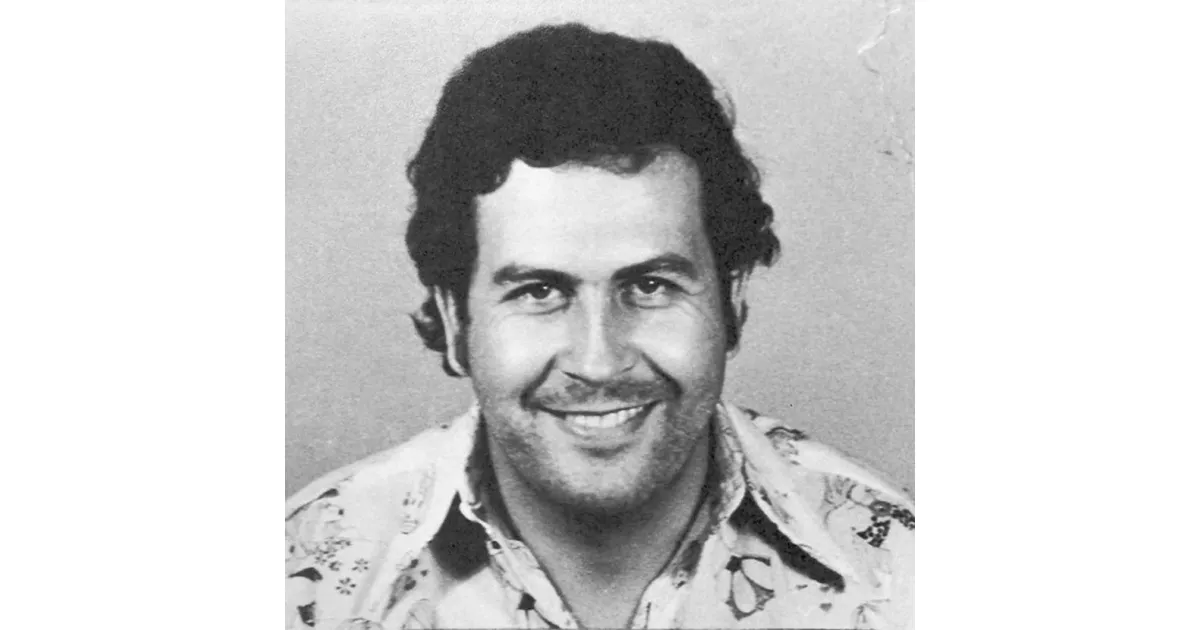Pablo Escobar was a Colombian drug lord who led the Medellín Cartel, responsible for a significant portion of the cocaine trade during the 1980s. Known for his ruthless tactics, he employed violence and bribery to expand his empire, becoming one of the wealthiest criminals in history. He briefly held a political position before his criminal activities overshadowed his political aspirations. Escobar's actions had a profound impact on Colombia, marked by widespread violence and political instability. He was eventually killed in 1993, bringing an end to his reign and the dominance of the Medellín Cartel.
December 1949: Birth of Pablo Escobar
In December 1949, Pablo Emilio Escobar Gaviria was born in Rionegro, Antioquia Department, Colombia. He was born into a family of Spanish origin, specifically from the Basque Country, and also had Italian roots. His father was a small farmer and his mother was a teacher.
December 1949: Pablo Escobar Born
On December 1, 1949, Pablo Emilio Escobar Gaviria was born in Rionegro, Antioquia Department, Colombia, into a family of Spanish and Italian origin. He was the third of seven children and grew up in poverty, in the neighboring city of Medellín.
1966: Escobar Leaves High School
In 1966, Pablo Escobar left high school just before his 17th birthday.
1971: Escobar Involved in Kidnapping
In 1971, Escobar expanded into violent crimes such as kidnappings for ransom after leaving secondary school. One of the most prominent victims was businessman Diego Echavarría Misas, abducted in 1971 and killed despite ransom payments.
1976: Escobar Marries María Victoria Henao
In 1976, Escobar married María Victoria Henao.
1976: Escobar Arrested and Released
In 1976, Escobar was arrested by the Administrative Department of Security (DAS) with 39 kilograms of cocaine hidden in his car. However, he was quickly released after judicial bribery, and the lead officer in the case was later murdered.
1978: Cartel Networks Expand Cocaine Transportation
By 1978, cartel networks were moving cocaine via fleets of small aircraft, go-fast boats, and shipping containers, coordinating with U.S.-based criminal groups.
1979: U.S. and Colombia sign Extradition Treaty
In 1979, the U.S. and Colombia signed an extradition treaty, which was later invalidated by Colombia's Supreme Court in 1986.
1982: Escobar Elected to Chamber of Representatives
In 1982, Escobar was elected as an alternate member of the Chamber of Representatives for the Liberal Party in the Colombian parliamentary election. During this time, he funded community projects such as the Barrio Pablo Escobar neighborhood, football pitches, and public works, enhancing his popularity in Medellín’s working-class areas.
1982: Escobar elected as alternate member of Colombian Chamber of Representatives
In 1982, Escobar was elected as an alternate member of the Colombian Chamber of Representatives for the Liberal Party. He also funded housing and sports projects in Medellín’s poor districts, which earned him the nickname “Robin Hood Paisa.
1982: Escobar becomes alternate member of Chamber of Representatives
In 1982, Pablo Escobar briefly served as an alternate member of the Chamber of Representatives for the Liberal Party.
1983: Political Career Ends After Denouncement
In 1983, Escobar's political career ended after Minister of Justice Rodrigo Lara Bonilla publicly denounced his involvement in drug trafficking and alleged cartel financing of political campaigns. Following Lara's statements, both the Colombian government and the United States increased pressure on Escobar, and his links to organized crime became a matter of national and international scrutiny.
1983: Minister of Justice denounces Escobar
In 1983, Minister of Justice Rodrigo Lara Bonilla denounced Escobar as a drug trafficker. As a result, Liberal leader Luis Carlos Galán expelled Escobar from the New Liberalism movement.
January 1984: Escobar Resigns his Seat
In January 1984, following his denouncement as a drug trafficker, Pablo Escobar resigned from his seat.
April 1984: Assassination of Rodrigo Lara Bonilla
On April 30, 1984, Minister of Justice Rodrigo Lara Bonilla was assassinated by cartel gunmen, which marked the beginning of open conflict between Escobar and the Colombian state.
1986: Supreme Court Invalidates Extradition Treaty
In 1986, Colombia’s Supreme Court invalidated the 1979 U.S.–Colombia extradition treaty, though President Virgilio Barco Vargas later reinstated it.
1986: Tribunal report finds no proof of Escobar's involvement in Palace of Justice attack
In 1986, a tribunal report found no proof that Escobar financed the Palace of Justice attack. Allegations persist that Escobar financed the operation to destroy extradition files.
1987: Escalation of Violence
From 1987, Escobar escalated violence into a campaign of assassinations and bombings.
1987: Forbes lists Escobar's cash flow
In 1987, Forbes listed Pablo Escobar's cash flow at at least US$3 billion and his net worth at over US$2 billion.
1988: Cali Cartel Bombing of Edificio Monaco
In 1988, the six-story Edificio Mónaco, built for Escobar’s family in Medellín, was gutted by a car bomb planted by the Cali Cartel.
August 1989: Assassination of Luis Carlos Galán
On August 18, 1989, presidential frontrunner Luis Carlos Galán was assassinated at a rally by cartel gunmen.
November 1989: Bombing of Avianca Flight 203
On November 27, 1989, Avianca Flight 203 was bombed, resulting in the deaths of 107 people, including two U.S. citizens. Authorities widely attributed the attack to Escobar.
1989: Bombing of Avianca Flight 203 and DAS Headquarters
In 1989, Escobar is widely believed to have ordered the bombings of Avianca Flight 203 and the DAS headquarters in Bogotá, resulting in the deaths of over 100 people.
1989: Testimony About Assassination of Luis Carlos Galán
In July 2006, journalist Virginia Vallejo, testified that Escobar ordered the 1989 assassination of Luis Carlos Galán.
1990: Colombian authorities pursued partial surrender agreements
By 1990, Colombian authorities pursued partial surrender agreements.
June 1991: Escobar surrenders and is confined in La Catedral
On June 19, 1991, Escobar surrendered under terms allowing confinement in La Catedral, a prison he designed with luxuries and handpicked guards.
1991: Constitution Banned Extradition
By 1990–91, Colombian authorities pursued partial surrender agreements. The 1991 Constitution banned extradition of Colombian nationals, widely seen as a concession to trafficker pressure.
1991: Escobar Surrenders to Authorities
In 1991, Escobar surrendered to authorities under an agreement with President César Gaviria that barred his extradition to the United States. He was confined in a luxury facility he built, known as La Catedral.
July 1992: Escobar escapes from La Catedral
In July 1992, after the murder of two associates inside La Catedral, the government ordered Escobar's transfer. He escaped on 22 July 1992, initiating a nationwide manhunt.
1992: Escobar Escapes from La Catedral
In 1992, after officials attempted to transfer him to a regular prison, Escobar escaped from La Catedral, prompting a nationwide manhunt.
December 1993: Medellín Cartel Disintegrates
Following Escobar’s death in December 1993, the Medellín cartel rapidly disintegrated.
December 1993: Death of Pablo Escobar
In December 1993, Pablo Escobar was killed in Medellín by the Colombian National Police. He was located in the Los Olivos neighborhood and, after being surrounded by police, he attempted to flee across rooftops but was shot.
December 1993: Escobar Killed in Medellín
On December 2, 1993, Escobar was located in Medellín’s Los Olivos neighborhood. He was shot and killed while attempting to flee across rooftops. Whether the fatal shot was from police or self-inflicted is debated.
1993: Forbes lowers estimate of Escobar's net worth
By 1993, Forbes listed Pablo Escobar's net worth to about US$1 billion.
1993: Estate Seizure and Redevelopment
In 1993, following Pablo Escobar's death, his estate was seized under Colombia’s Extinción de Dominio asset-forfeiture laws. After abandonment and looting, the property was redeveloped into a family-oriented theme park with a water park, museum spaces, and memorials to Escobar’s victims, discouraging narco-tourism.
1995: Cali Cartel Assumes Dominance
By the mid-1990s, specifically 1995, the rival Cali Cartel assumed dominance of the cocaine trade after the Medellín Cartel disintegrated.
1995: Henao and Children Flee Colombia
In 1995, María Victoria Henao and her children fled Colombia, later settling in Argentina under assumed identities.
1998: Leadership of the Cali Cartel was dismantled
By 1998, the leadership of the Cali Cartel was dismantled.
July 2006: Virginia Vallejo Offers Testimony
In July 2006, journalist Virginia Vallejo, a former partner of Escobar, offered testimony to Colombian authorities in the reopened case against ex–justice minister Alberto Santofimio Botero, alleging that he had encouraged Escobar to order the 1989 assassination of presidential candidate Luis Carlos Galán.
2007: Airings on Colombian television
In 2006-2007, Portions of Vallejo’s taped declaration aired on Colombian television (RCN) in 2006–2007, drawing wide public attention.
2007: Santofimio Convicted of Terrorist Homicide
In 2007, a specialized criminal court convicted Santofimio of homicidio con fines terroristas and sentenced him to 24 years’ imprisonment for his role in the assassination of Luis Carlos Galán.
2007: Film Announcements
In 2007, announcements were made regarding two major feature films about Pablo Escobar: *Escobar* and *Killing Pablo*.
2008: Santofimio's conviction reversed
In 2008, the Tribunal Superior de Cundinamarca reversed on appeal Santofimio's conviction for his role in the assassination of Luis Carlos Galán.
2009: Documentary Release
In 2009, Juan Pablo Escobar appeared in the documentary *Sins of My Father*, where he sought reconciliation with the families of his father's victims. He also published memoirs denouncing his father’s violence.
2009: Truth Commission Judged Escobar's Involvement
In 2009, the Truth Commission judged Escobar's involvement in the Palace of Justice attack as plausible but unproven.
2010: Initial Conviction of Col. Plazas Vega
In 2010, Col. (r) Luis Alfonso Plazas Vega was initially convicted related to the Palace of Justice siege.
2010: Truth Commission Judged Escobar's Involvement
In 2010, the Truth Commission judged Escobar's involvement in the Palace of Justice attack as plausible but unproven.
2010: Truth Commission Report on Palace of Justice
In 2010, the Truth Commission on the Palace of Justice concluded that the M-19 bore responsibility for initiating the unlawful attack and taking hostages, and that during the subsequent retoma state forces committed serious human-rights violations.
2010: Truth Commission Report Details M-19 Planning
The 2010 Truth Commission report details M-19 planning, weapon sources, and state abuses but does not make a definitive judicial finding on cartel funding regarding the Palace of Justice siege.
August 2011: Supreme Court Reinstates Santofimio's Sentence
On August 31, 2011, the Supreme Court of Colombia (Sala de Casación Penal) set aside the acquittal and reinstated the 24-year sentence in Radicado 31761 for Santofimio.
2011: Court Ruling and Vallejo Relocation
In 2011, the Supreme Court’s ruling in the Santofimio case rested on the totality of the evidence. Vallejo subsequently cooperated as a witness in other high-profile cases and relocated to the United States with assistance facilitated by U.S. authorities for security reasons.
2011: Killing Pablo Film Release
In 2011, the film *Killing Pablo* was released. The film is based on the life of Pablo Escobar.
2014: Escobar Inc. Founded
In 2014, Roberto Escobar and Swedish associate Olof K. Gustafsson founded Escobar Inc in the United States, asserting “successor-in-interest” claims to Pablo Escobar’s name and likeness.
2014: Inter-American Court Holds Colombia Responsible
In 2014, the Inter-American Court of Human Rights held Colombia internationally responsible for enforced disappearances, torture, and related violations committed by state agents during and after the retaking operation, ordering reparations.
2015: Acquittal of Col. Plazas Vega
In 2015, Col. (r) Luis Alfonso Plazas Vega was acquitted by the Supreme Court for lack of proof tying him to disappearances during the Palace of Justice siege.
2018: Henao Charged with Money-Laundering
In 2018, Maria Henao was charged with money-laundering but denied wrongdoing.
February 2019: Demolition of Edificio Monaco
On 22 February 2019, city authorities demolished the Edificio Mónaco in Medellín at the urging of Mayor Federico Gutiérrez, replacing it with a park commemorating thousands of cartel victims. President Iván Duque stated the demolition was intended “not to glorify the perpetrators, but to honor the victims.”
2019: Conviction Upheld in Palace of Justice Case
In 2019, Gen. (r) Jesús Armando Arias Cabrales's 35-year sentence for aggravated enforced disappearance during the retoma of the Palace of Justice was upheld by the Supreme Court.
2023: Hippo Relocation Proposal
In 2023, Colombian officials proposed relocating dozens of hippos to sanctuaries in Mexico and India. This plan, aimed at managing the growing hippo population, raised questions about feasibility and ecological ethics.
Mentioned in this timeline
Home Box Office HBO is an American pay television service...
The United States of America is a federal republic located...
California is a U S state on the Pacific Coast...
Colombia officially the Republic of Colombia is a country located...
Virginia officially the Commonwealth of Virginia is a state located...
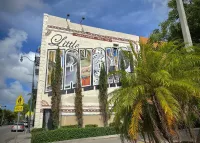
Miami is a major coastal city located in Florida United...
Trending

6 months ago Jennifer Garner and John Miller share passionate kiss; Ben Affleck spotted solo.
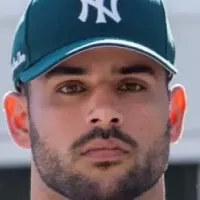
Matthew Vincent Milano is an American football linebacker who currently plays for the Buffalo Bills in the NFL His college...

9 months ago Lane Johnson Secures One-Year Extension with Eagles Through 2027, Boosting His Pay.
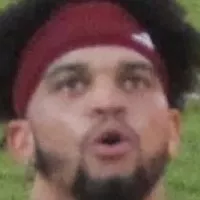
16 days ago NFL Week 13 Predictions: Caleb Williams Impact and Key Matchup Insights Revealed
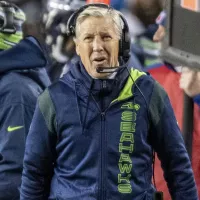
6 months ago Pete Carroll envisions Jeanty & Mostert as 'Thunder and Lightning' in Raiders backfield.
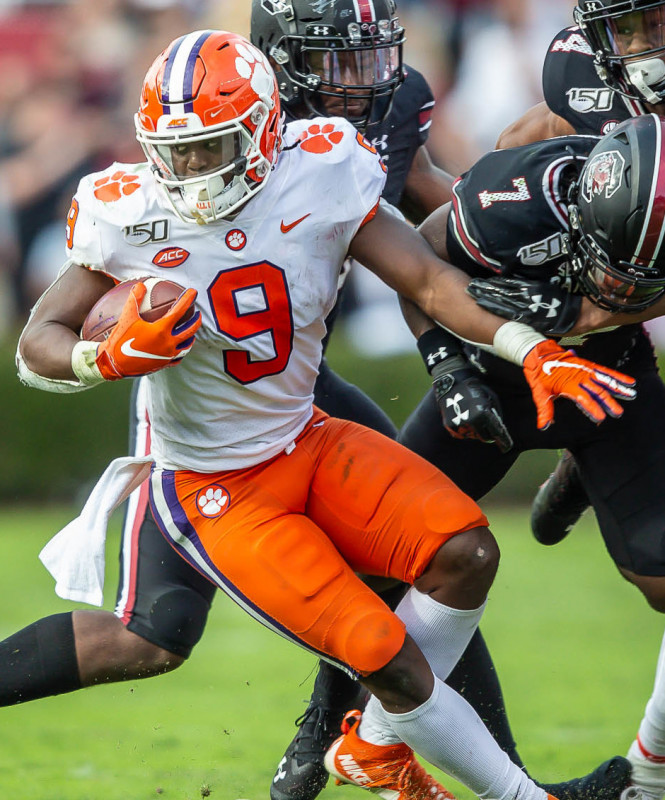
1 month ago Travis Etienne's Week 9 Fantasy Outlook: Start or Sit Him Against the Raiders?
Popular

Candace Owens is an American conservative political commentator and author...

Ilhan Omar is an American politician currently serving as the...

XXXTentacion born Jahseh Dwayne Ricardo Onfroy was a controversial yet...

Tom Cotton is an American politician and Army veteran currently...
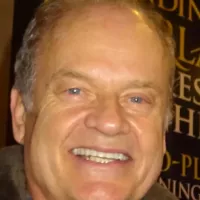
Kelsey Grammer is an accomplished American actor producer and singer...
The Kennedy Center Honors are annual awards recognizing individuals and...
